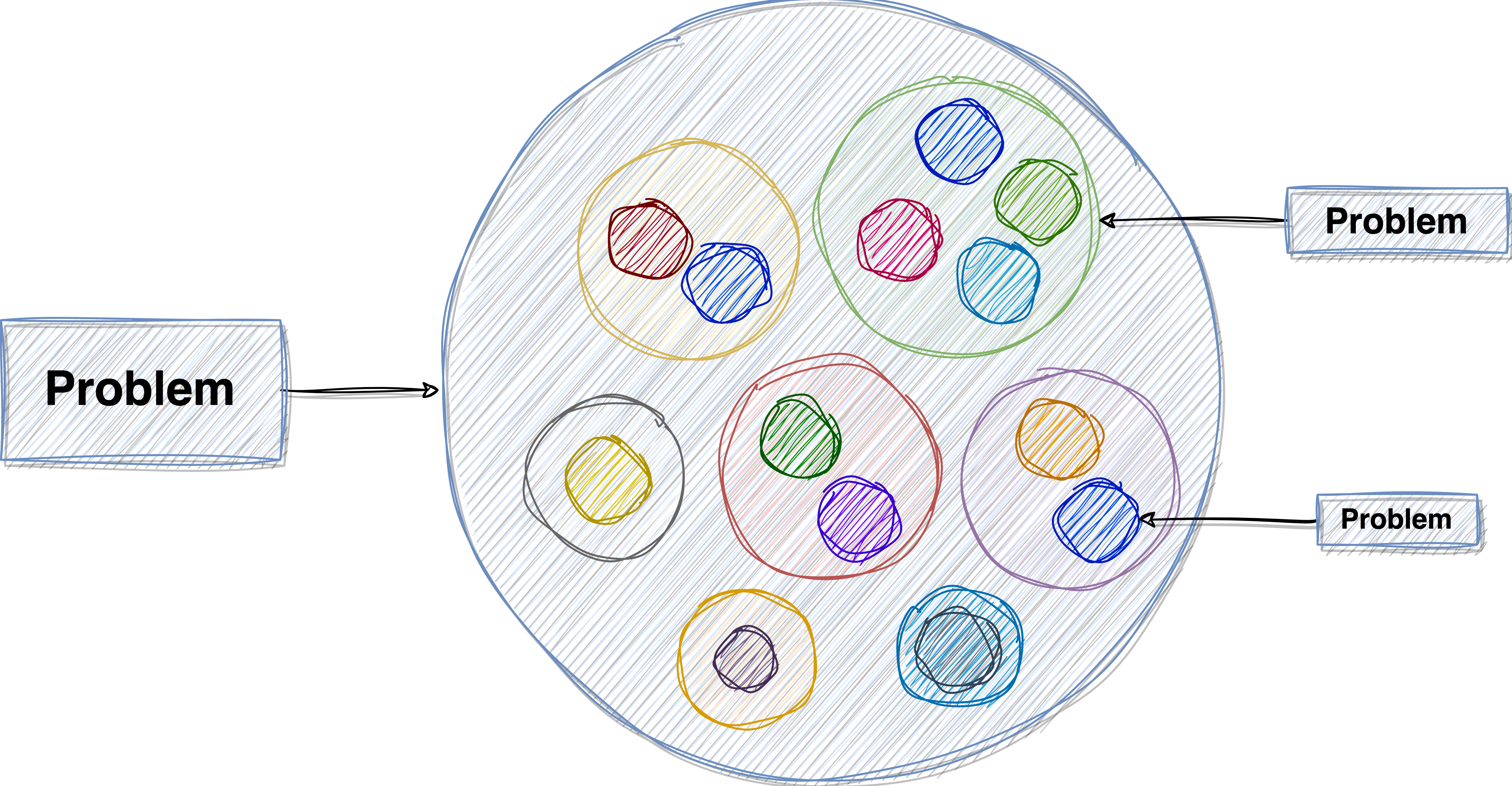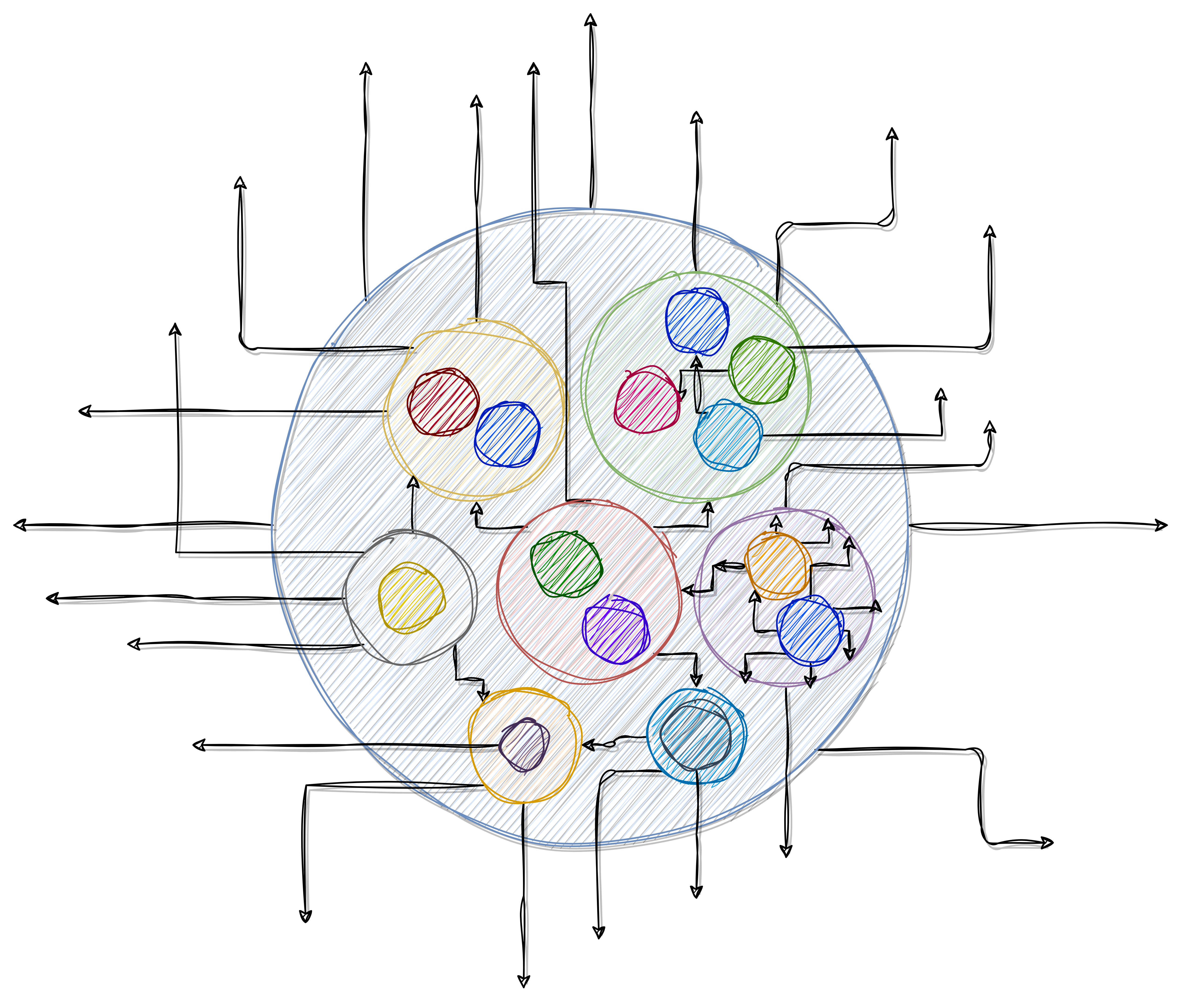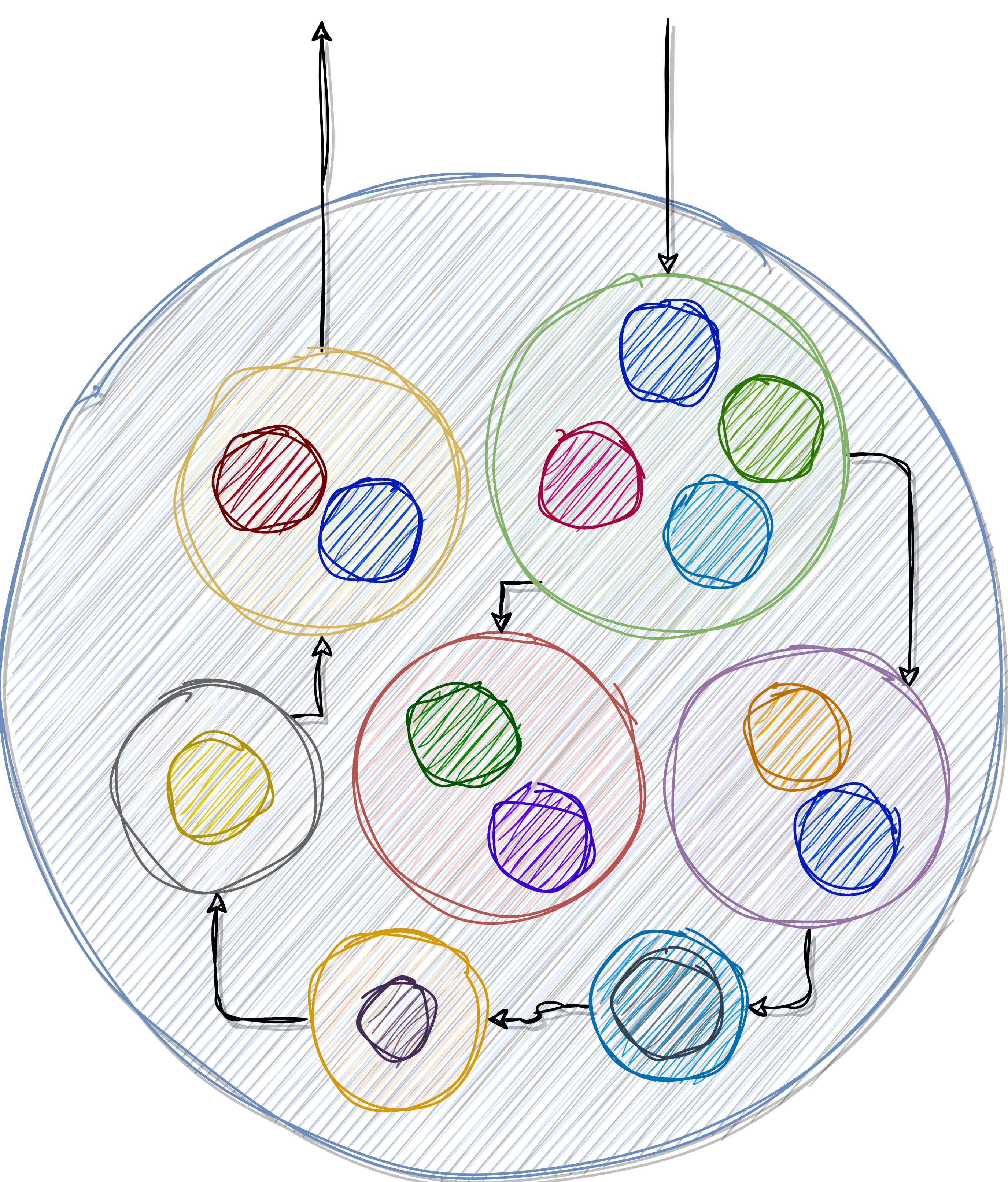Navigating Complex Problem Spaces: Breakdown and Direction¶

In the realm of software engineering, a problem can often be immense. When embarking on problem-solving, comprehending the scope of the issue becomes paramount. This encompasses the problem space, a comprehensive domain encompassing all aspects of the problem. Imagine it as a landscape with various contours. As software engineers, it’s crucial to skillfully deconstruct a problem into manageable fragments. This practice not only simplifies complexity but also allows teams to concentrate on specific and controllable components.

An immense problem space is a signal of potential intricacies and implies multiple avenues for resolution and various directions to explore. However, an abundance of choices without clear direction can confound the team. Visualize a map with numerous paths – without guidance, the team can lose their way, and decision-making becomes a daunting task. The result? A team adrift, grappling with an assortment of details and losing sight of the core issue at hand. So, what is the core problem that the team aims to solve? This is an important question that determines how far a team can go.

Contending with an extensive problem space necessitates a dual approach: breaking down and establishing direction. First, the task involves fragmenting the immense problem into smaller, more approachable sub-problems. Next comes the crucial step of defining a precise direction to guide the team’s efforts. Ultimately, all the components are harmonized into a cohesive whole. This strategic methodology aligns with the age-old “divide and conquer” philosophy.
To make it short, the significance of these steps becomes apparent for problem-solving:
-
Problem Decomposition: Divide and Conquer emerge as a powerful technique for unraveling complex issues, transforming them into manageable parts.
-
Prioritization: By prioritizing tasks, teams identify key objectives and allocate attention where it matters most.
-
Decisive Action and Focus: A well-defined direction sharpens focus, streamlines tasks, and eliminates superfluous steps, guiding both team and product towards desired outcomes.
-
Iterative Approach: Problem-solving rarely follows a straight line; iterative cycles enable adjustment and growth. Flexibility remains essential as teams refine strategies based on insights gained.
In summary, grappling with intricate problem spaces in software engineering necessitates a strategic approach. Understanding the scope of the issue, fragmenting it into manageable components, defining a clear direction, and embracing the “divide and conquer” concept is integral to effective and efficient problem resolution.
